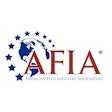
Product recalls, cyber attacks, workplace accidents and extreme weather events represent just a fraction of crises that can strike businesses operating in the animal feed sector. Whether a crisis strikes suddenly or grows from a concern into a full-blown crisis, a business must be prepared to respond with accuracy, brevity and clarity to internal and external audiences. Communication is an integral part of a business’s crisis response and can build trust while mitigating the risks posed by misinformation and disinformation.
Developing and periodically reviewing a crisis communication plan prior to an incident can help companies exercise some control in an inherently stressful situation. A crisis communication plan can project a responsible and organized response and convey a sense of control at a time when many factors are unclear. Below, we look at components of a crisis communication plan, review steps to take in the first 24 hours after a crisis and consider strategies for communicating responsibly with internal and external audiences.
Core components of crisis planning
Core components of a crisis communication response include a designated spokesperson(s), a holding statement, talking points for internal and external stakeholders, and monitoring social and traditional media channels.
Crisis spokesperson(s): Communicating through designated contacts helps support consistent messages. Some organizations elect to funnel internal messages through the human resources department and direct external communications through a designated media relations/corporate communications contact. The spokesperson should work closely with leadership as a situation emerges. It is important that all employees are aware of designated spokespeople and know to direct inquiries to these team members.
Holding statement: A holding statement conveys what can be shared at a time when a situation may still be developing. Typically, a holding statement addresses three areas:
- Here is what we can confirm about the situation now.
- This is what we don’t know and are working to address.
- (Optional) Here’s what you can expect with regard to updates/additional information.
As an example of a holding statement, consider a fire occurring at a feed mill. “At 12:15 p.m. today, a fire occurred at the XYZ location. First responders are on-site, and all employees were able to evaluate the building. The cause of the fire is still under investigation.
The crisis response team may elect to update the holding statement with additional details, particularly if media questions continue.
Distributing updates: A company’s website and social channels offer a convenient platform for sharing updates in the event of a crisis. Depending on the incident, a “newsroom” or “community” page may be the best platform to post updates. Severe or extreme incidents – such as a workplace violence incident or accident – will likely generate requests for comment or on-site visits from media outlets. Such inquiries should be vetted through the spokesperson. A news van may appear at a guard station, or an interviewer may show up in a reception area and demand an interview at that moment, but all interviews should be vetted through the spokesperson.
The crisis communication plan should include a media list including local newspaper, TV and radio as well as extension offices, veterinarians and associations.
Monitoring the crisis conversation: When a crisis strikes, it is important to monitor the conversation taking place externally. Monitoring social media, following local news updates and closely evaluating comments on the company website and customer hotline should be heightened during a crisis. The tone of external conversations can serve as a useful gauge for evaluating stakeholders’ response to the incident and may suggest additional outreach is needed. For example, a neighbor’s social post about wastewater runoff at a facility might prompt an organization to host an online or in-person “town hall meeting” with neighbors. Third-party content monitoring services can provide clippings of print and broadcast coverage and help a company determine whether an incident is ebbing or gaining traction.
In the hours after a crisis
Within an hour of the incident, a company should gather its designated crisis team to assess the situation and evaluate what is known, review mitigation actions underway and assess issues that may not be known but are likely to generate questions. Ensure that contact lists are pulled for key stakeholders including customers, relevant suppliers and media. Inform leadership of the intended path forward and ensure team members are engaged to listen to/track all media coverage.
Within the first three hours, craft preliminary talking points for employees and customers. Develop a “holding statement” for media. Continue to monitor social handles and website and place approved the holding statement on the website and/or social media handles.
Within the first four to six hours, distribute talking points to employees. Aim to provide employees with daily situation reports until the event is resolved. Similarly, monitor online and media coverage and evaluate whether additional outreach is needed.
Once a crisis is resolved, a debrief with the team should be held to evaluate what worked well, any issues that arose, and how to mitigate any concerns. For example, after reviewing media coverage, a company may decide to conduct media training for key spokespersons. Many companies conduct annual media training sessions to help their spokespersons become comfortable in interview situations.
Looking for a resource to get your crisis plan started? The U.S. Department of Agriculture (USDA) Healthy Farms Healthy Agriculture site offers helpful tools at www.healthyagriculture.org.
Staying out of harm’s way: why + what
The amount of information that is unknown can make crisis communications particularly challenging, but it is essential to stick to the facts. Never speculate. A helpful technique for staying on message is to use the “why + what” formula. Explain “why” you cannot provide more information. For example, “As first responders are still investigating the incident, we cannot speculate on the cause. Next, share “what” you can tell. “What we can tell you is that all of our employees safely evacuated the facility, and we will continue to work with authorities to assure the safety of our team and facility.”
Silence can feel awkward and, as such, it is a tactic that reporters sometimes use to elaborate on a response. But remember, the beauty of silence is that it can never be misquoted. Stick to approved messages and don’t elaborate. It is not an interviewee’s job to educate a reporter.
Conduct a crisis drill
Many organizations’ safety teams conduct crisis drills to evaluate how they would respond to a particular situation. The crisis drill can also be a useful exercise to prepare those responsible for communicating during a crisis. Gathering the team and role playing a few hypothetical crisis situations can get people comfortable implementing the steps of a crisis plan.
While most organizations want to avoid a crisis situation, the Japanese language suggests that the danger inherent in a crisis may be associated with a silver lining. The Japanese word for crisis (危機 - "kiki") is made up of two characters, with one meaning "danger" and the other meaning "opportunity." Such linguistics suggest that with a proper response in place, the danger inherent in a crisis can also be an opportunity to build trust through responsible communications with internal and external audiences.















